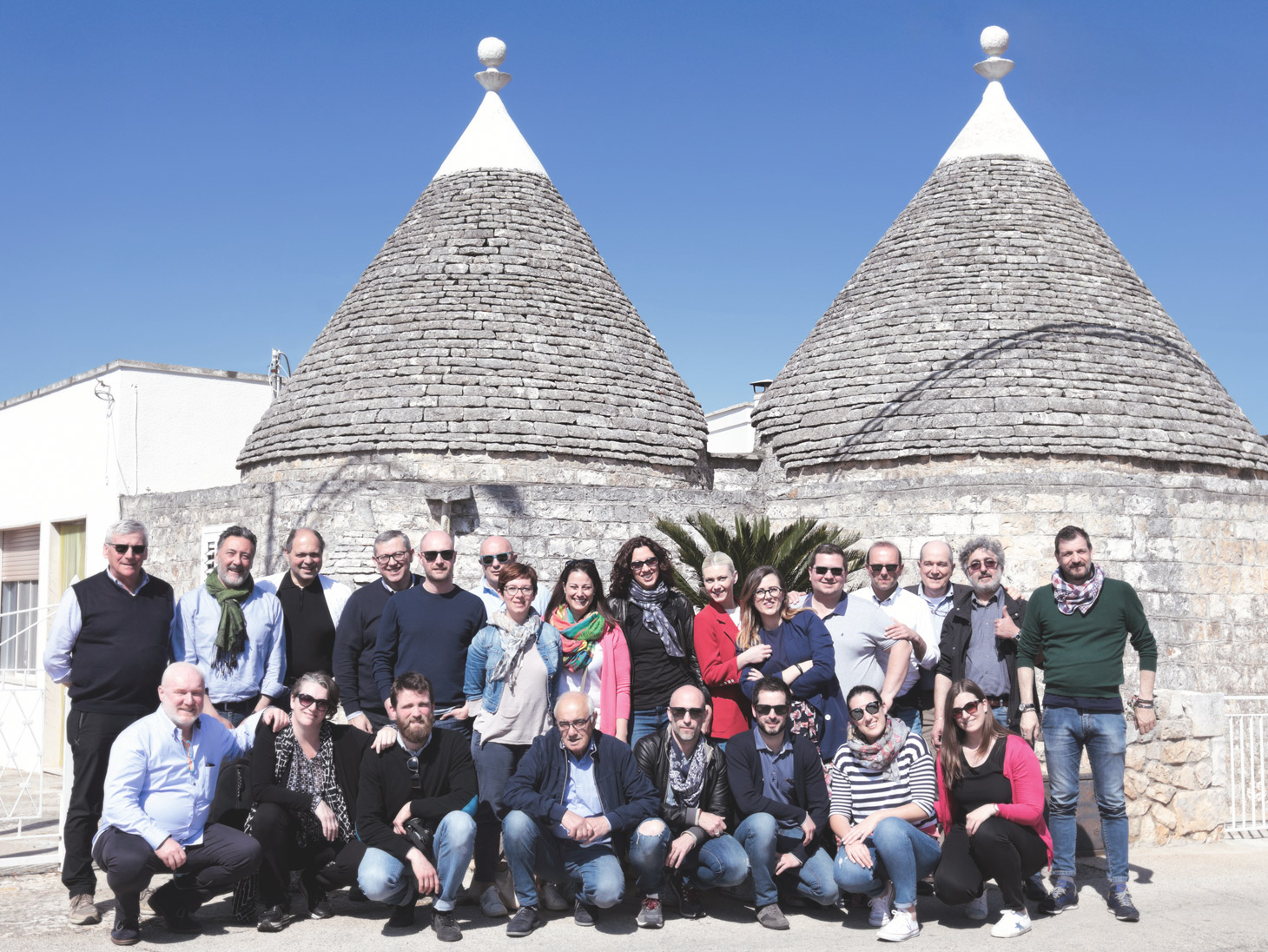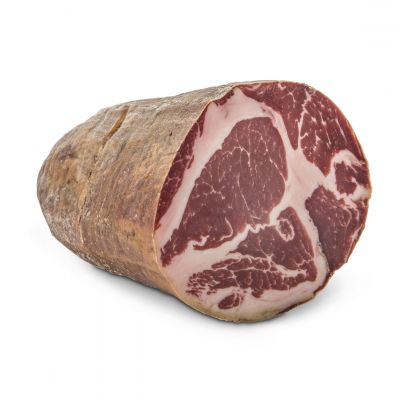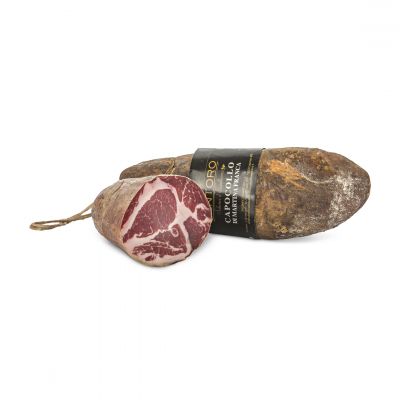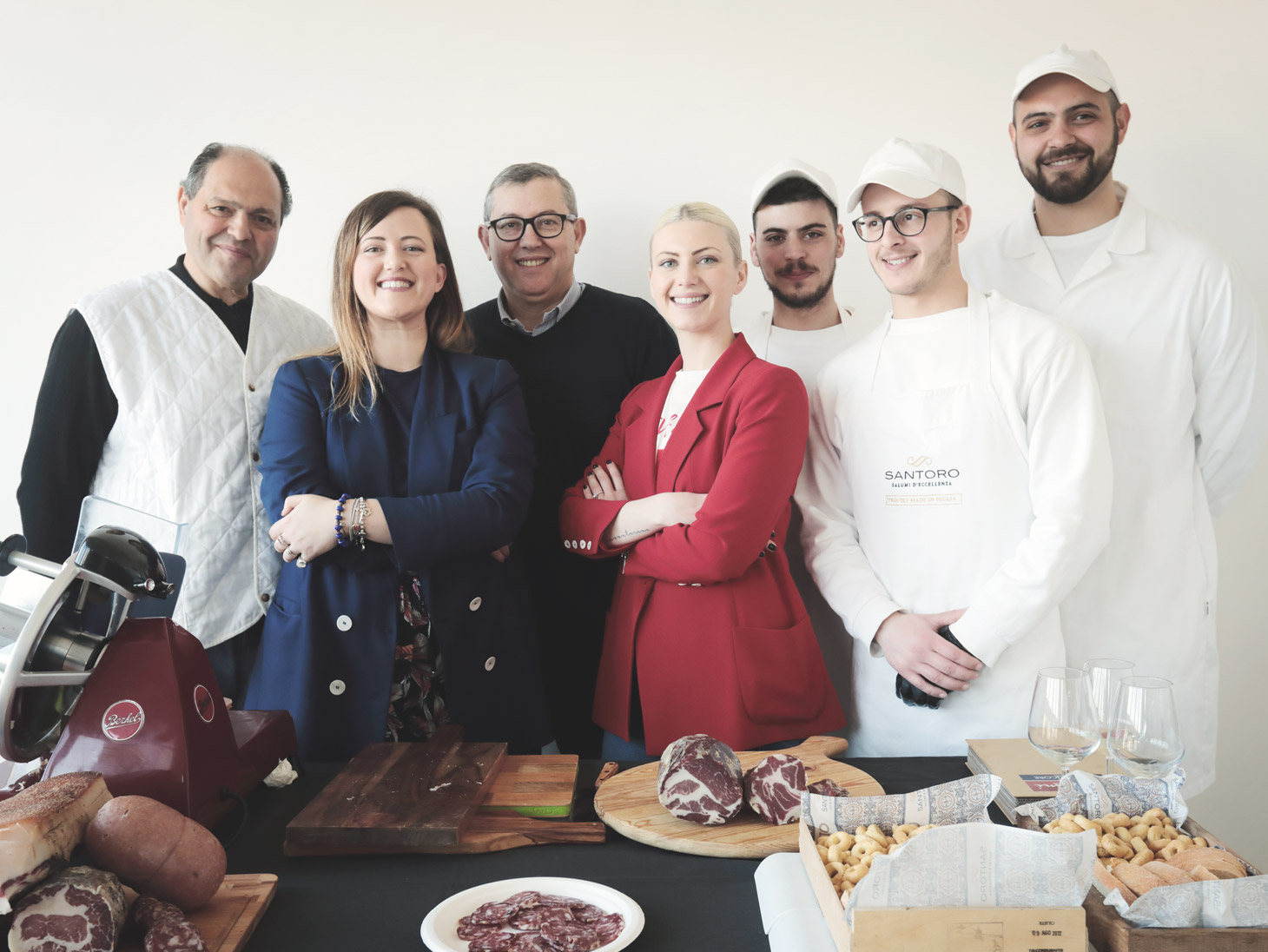
Leaving the sea of Salento we reached the “trulli” of Valle d’Itria to meet our friends of Salumificio Santoro. We are in Cisternino, in a small village in the hills adorned with olive trees and the typical pointed roofs.
Giuseppe and Piero, the two pillars of the company, welcomed us and remembering some anecdotes about their first meeting with Gino Magro several years ago, we entered the plant. Here Angela and Micaela, daughters of Giuseppe, and Nico, the son of Piero welcomed us with the usual Apulian warmth that we soon got used to during this trip.
After wearing shoe covers, gowns and hairnets we started the visit in the company’s processing rooms, to understand more closely the main aspects of the production of Capocollo di Martina Franca. Giuseppe immediately started working to make us understand the importance of the different stages of the processing.
The meat comes from the cut of the neck of local pigs and it’s dry salted with sea salt from the Apulian saltpan of Margherita di Savoia and black pepper, and then left to rest. During the two weeks of rest the meat is turned over four times, to allow the salting to penetrate to perfection.
Then it is left to marinate for a few hours immersed in vin cotto, the cooked must of Verdeca, a native white vine from Valle d’Itria, then delicately spiced and stuffed. Nothing is automated, the processing is managed only by the skilled hands of Giuseppe, Piero and the young people who work with them.
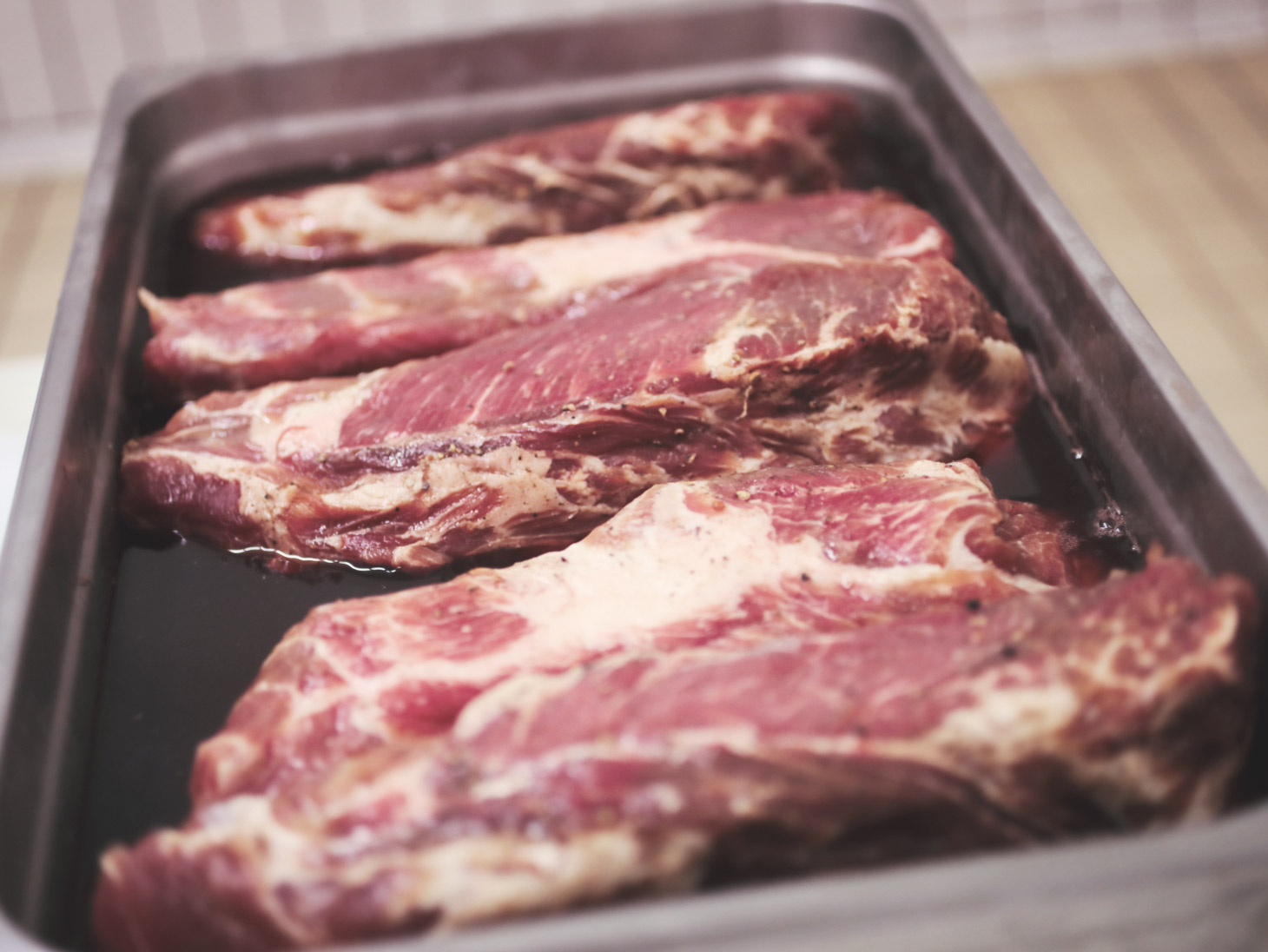
Santoro doesn’t use machineries so Giuseppe showed us how the meat should be massaged by hand to give the proper shape to the piece. The Capocollo is then stuffed into a natural bladder, also previously immersed in vin cotto, and tied by hand to be hang.
We learn that the real Capocollo of Martina Franca can be tied only at one end, therefore to ensure that the meat maintains its compactness and that the fat and thin parts do not divide, it is “dressed” first with a sock and then with a net. Finally, one last massage let out the air bubbles formed during the processing and allows to give further shape to the piece.
Capocollo is then smoked for two days with Fragno wood, an oak spread in the area. Giuseppe and Piero allowed us to lean out to the cell, and although it was not working at that time, the intense scent of smoke immediately overwhelmed us.
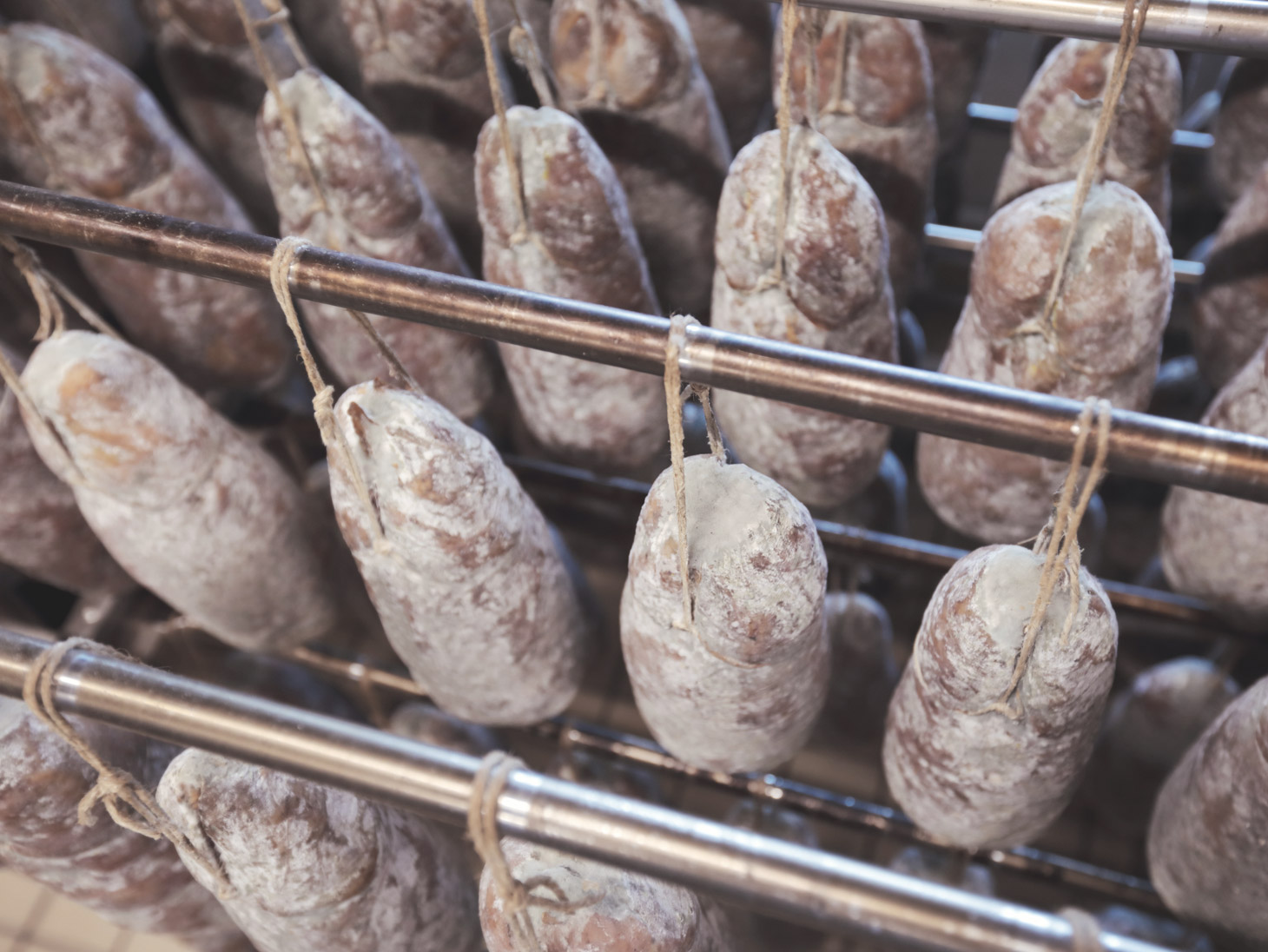
Once capocolli are dried they are aged for at least 90 days in cellars with natural aeration, where the winds from the Adriatic and Ionian seas complete the work. At the end of the maturing, the Capocollo di Martina Franca reveals all its characteristic aromas of toasted, spices and hazelnuts, with a delicate hint of smoke and a light winy note.
The hosts knew that the vision and the scent of all those capocollo hung in the aging room would have made us hungry, so at the end of the visit we had lunch all together with the Capocollo of Martina Franca and the unforgettable fried specialities made by Giuseppe’s mother and his wife Piera.
One last thing we tasted and we suggest you to try: fried zucchini flowers, filled with capocollo and ricotta. They are really delightful!
Giulia Bassetto
Marketing manager
